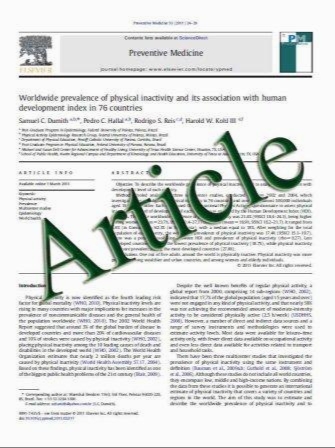Psychiatric disorders in children and adolescents presenting with unexplained chronic pain: what is the prevalence and clinical relevancy?
- نوع فایل : کتاب
- زبان : انگلیسی
- مؤلف : Lidewij M. E. Knook Antoinette Y. Konijnenberg Joost van der Hoeven Jan L. L. Kimpen Jan K. Buitelaar Herman van Engeland Elisabeth R. de
- چاپ و سال / کشور: 2010
Description
The prevalence of psychiatric disorders among children with unexplained chronic pain (UCP) is high in unselected populations and pain clinics, yet the clinical relevance of these disorders in children referred for unexplained pain is not known. This study assessed the prevalence of clinically relevant psychiatric disorders and their predictors in children referred to a children’s hospital for UCP. Psychiatry morbidity was assessed in 134 children, aged 8–17 years, using the Diagnostic Interview Schedule for Children–parent version (DISC-P) and the Semi-structured Clinical Interview for Children and Adolescents (SCICA). Clinical relevance was determined using a maladjustment criterion of 61 or lower on the Children’s Global Assessment Scale (CGAS). Pain parameters were measured with standardized questionnaires. Results were analysed by logistic regression. According to the DISC-P, 21% of the children had clinically relevant psychiatric disorders, predominantly anxiety disorders (18%). According to the SCICA, 28% of the children had clinically relevant psychiatric disorders, consisting of anxiety, affective, and disruptive disorders (12, 19, and 9%, respectively). Headache (compared to musculoskeletal pain) was an independent clinical predictor of psychiatric morbidity (OR = 3.10; 95% CI 1.07–8.92, p = 0.04/ adjusted OR 2.99; 95% CI 1.02–8.74, p = 0.04). In conclusion, clinically relevant psychiatric disorders are common among children and adolescents referred for UCP. Adding a child psychiatrist assessment, treatable affective and disruptive disorders become identifiable. Children with an additional risk are those presenting with headache.
Eur Child Adolesc Psychiatry (2011) 20:39–48 DOI 10.1007/s00787-010-0146-0 Received: 5 February 2010 / Accepted: 30 October 2010 / Published online: 21 December 2010


